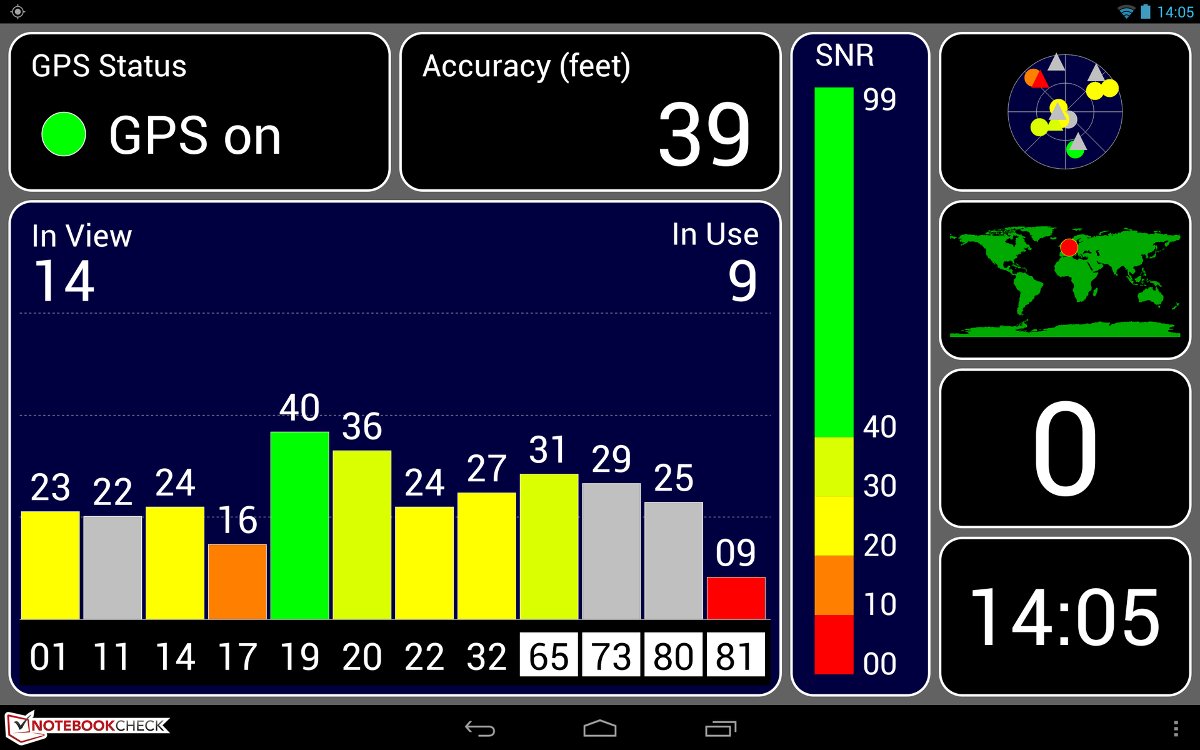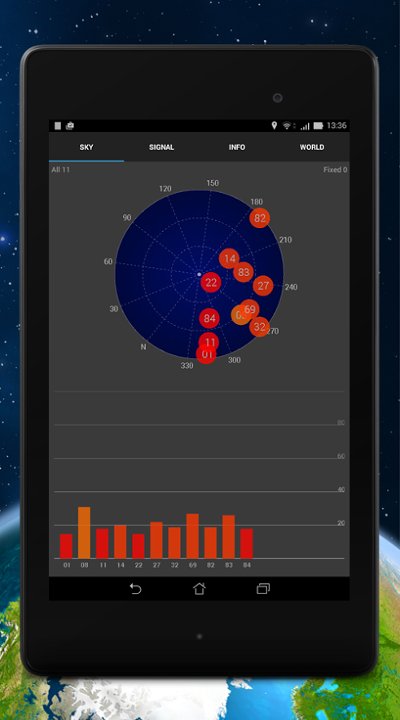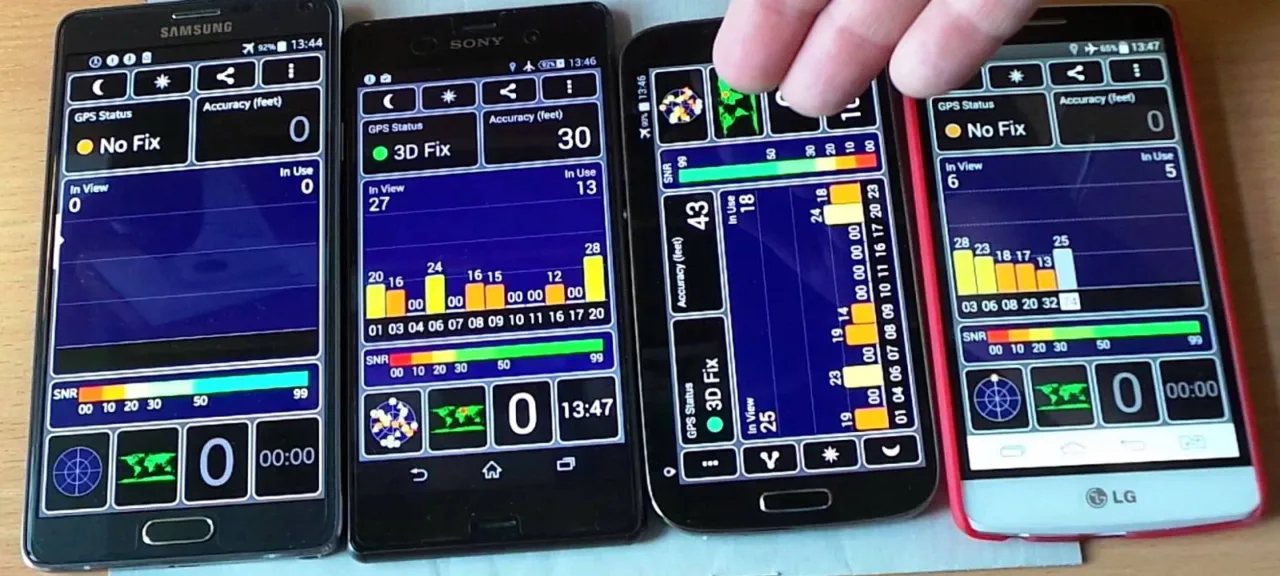One of the best apps of this kind is GPS Test.

GPS Test offers a wide range of features: it shows how many satellites are in view and where they are, lets you check positioning accuracy, displays your geographic coordinates, includes a compass, and provides plenty of other data such as speed, altitude above sea level, and even sunrise and sunset times for your current location.
It also renders real-time graphs, such as signal strength over time and the movement of the set positioning point. With GPS Test, you can see how many satellites your device can actually maintain a lock on and at what signal levels.
Alternatives to GPS Test work in much the same way and generally show the same data—the differences are mostly in the interface and small details. For example, the GPS info tool also does a solid job of showing how many satellites are connected and their signal strength. Highlights include support for displaying GLONASS satellites, a sky map, and a Russian localization.

I suggest starting receiver diagnostics with the basics—make sure it’s enabled in the settings. Next, you can install the app GPS Status & Toolbox, which helps update the A‑GPS cache and clear it if needed. It also lets you calibrate the compass and accelerometer. Note that it requires an internet connection to work.
Just a reminder: testing GPS indoors without windows—or far from them—is basically pointless. If you don’t want to go outside, the best option is to place your phone on a windowsill. Powerful electrical appliances running nearby can also cause interference. One more trick: sometimes it helps to rotate the phone a few full turns.
Among the built-in options for improving signal, first check the relevant item under the “Wireless networks” menu. As for useful apps, I can recommend GPS Aids, which lets you reset various settings and caches. It often helps a lot, but it requires root access.
